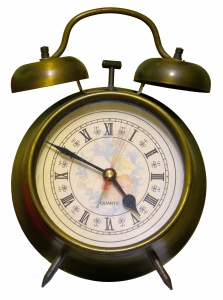Our Boston car accident lawyers know that the risk of accidents goes up at night, especially as many state and local governments increasingly face difficulties coming up with the money to install, operate and maintain sufficient lighting along roadways. The good news is, however, that researchers are evaluating new lighting technologies for car headlights that could potentially make driving at night safer. 
The research is timely as drivers enter into the most dangerous season on the roads. While one of the big risks of accidents in Boston is slippery roads due to bad winter weather, there is also another danger that drivers face in winter: daylight savings time. Research has indicated that daylight savings time increases the chance of auto accidents when the time change goes into effect.
Daylight Savings Time and Night Driving
The risk of an accident rises significantly at night because drivers need about a second-and-a-half to stop their vehicles and motorists in the evening can only see about 160 feet ahead of them with headlights.
With daylight savings time in effect, darkness comes early. Setting the clocks back for an hour means that more motorists end up driving some or all of their evening commute in the dark, and thus coping with the dangers of lower visibility.
Of course, by setting the clocks back, motorists also have more light when they are driving to work on their morning commute. However, researchers in Britain have demonstrated that the decrease in the number of accidents on lighter mornings does not offset the increase in the number of accidents that occur in darker evenings when daylight saving time is in effect.
The research came from comparing accident data during three years when Britain did not observe daylight savings time with accident data from times when daylight savings was in effect. As the Coventry Telegraph reported, the researchers found that daylight savings time had a negative impact on road safety and that as many as 527 car accident deaths and serious auto accident injuries could potentially be avoided if the clocks didn’t get turned back each year.
Drivers, unfortunately, don’t get a say in whether they want the clocks to change. This means motorists on the road today need to look for ways to improve safety when forced to drive home in the dark. Motorists can reduce their risk of accidents on their evening commute by driving more slowly to account for the reduced visibility and by using their high beams when it is safe to do so.
The research currently being conducted by the Lighting Research Center (LRC) at Rensselaer Polytechnic Institute could also help to reduce the risk to drivers operating their vehicles at night. The research has shown that headlights that swivel or bend could result in four percent fewer accidents on low-speed roads with sharp curves as compared with traditional stationary low-beam headlights. Hopefully, this research and the new headlight technologies that find their way to cars as a result will help drivers to stay safer during their winter commutes when it gets dark early.
If you lost a loved one in an accident, contact Jeffrey S. Glassman for a free and confidential appointment to discuss your rights. Call (617) 777-7777.
More Blog Entries:
NHTSA Investigates Post-Crash Fire Risks of Chevy Volts Sold in Massachusetts, Nationwide, Boston Car Accident Lawyer Blog, December 9, 2011
 Boston Car Accident Lawyer Blog
Boston Car Accident Lawyer Blog

